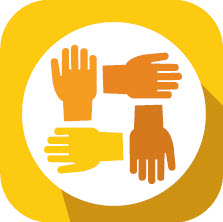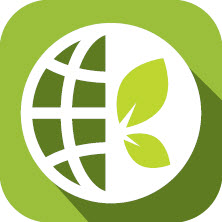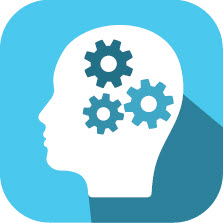Early Childhood Program Overview
Early Childhood programs support lifelong learners
A child's early years are essential in developing a foundation for school success. FCPS works hard to provide programs and services that prepare young children and parents who need extra guidance and support to be ready to start kindergarten feeling confident and ready to learn. Some of the early childhood programs that FCPS offers include:
- Child Find - For students in need of special education and related services, Child Find identifies, locates, and evaluates children residing in Fairfax County. Within Child Find, the Early Childhood Identification and Services program provides a range of special education services to preschool aged children. Learn more about Early Childhood Child Find.
- PreK - This preschool program is for children 3-4 years old whose parents meet income requirements. Priority is given to 4-year-olds. Learn more about applying to the PreK program.
- Early Head Start - This program is for children 0-2 years of age and expectant mothers who meet income requirements. Learn more about applying to the Early Head Start program.
High quality instruction in the Early Childhood classroom supports children’s social and emotional development by providing an integrated curriculum that focuses on improving their self-control, mental flexibility and working memory.
Early Childhood Instruction in FCPS
High quality instruction in the Early Childhood classroom supports children’s social and emotional development by providing an integrated curriculum that focuses on improving their self-control, mental flexibility and working memory.
Year at a Glance
The FCPS Early Childhood Curriculum is designed to help children understand who they are through hands-on authentic learning experiences.
Quarter One: Who I Am
Essential Understanding: Students will gain a sense of self within school.
- Me and Myself
- Rules and Routines
- Seasonal Changes
Quarter Two: Who I Am in My Family
Essential Understanding: Students will gain a sense of self within school and home.
- Families
- Cultures
- Seasonal Changes
Quarter Three: Who I Am in the Community
Essential Understanding: Students will gain a sense of self within the community.
- Geography/Maps
- Economics
- Seasonal Changes
Quarter Four: Who I Am in the World
Essential Understanding: Students will gain a sense of self within the world.
- Life Cycles
- Natural Resources
- Seasonal Changes
Learning Expectations
High expectations are set for all students. Teaching teams work together to continuously plan and instruct students in ways to foster individual growth and development.
Early Head Start: Birth - 3
Through a primary caregiver model, teaching teams create nurturing, well-managed settings to provide intentional and engaging learning opportunities to foster social, emotional, and cognitive development. Teaching teams monitor individual progress and support our youngest learners through Creative Curriculum resources.
Preschool Children: 2 - 5
The Early Childhood Program of Studies for children ages 2-5 is aligned with Kindergarten learning expectations. The Early Childhood program uses an integrated approach to address all content throughout daily routines and hands-on authentic learning experiences.
The eight areas of focus for learning are:
- Math - Geometry, Number Sense, Measurement, Data, Problem Solving
- Science - Inquiry and Problem-Solving, Physical Properties, Life Processes, and Living Systems, Seasonal Effects
- Social Studies - Families, Cultures, Geography, Communities, Rules and Routines
- Language Arts - Listening, Speaking, Writing, Reading (e.g., Comprehension or Phonological Awareness)
- Music and Art - Tools and Forms of Creative Expressions such as singing, dancing, painting, etc.
- Health and Physical Education - Large and small motor development, safe and healthy practices and nutrition
- Approaches to Learning - Executive functions, persistence, initiative, curiosity, cooperation, attentive
- Social and Emotional Development - Talking about feelings, expressing self, managing emotions, practicing positive coping skills, making friendships, appreciating others, socially engaging with peers, gaining an awareness of feelings in self and others, and developing healthy relationships with peers and teachers.
Most of the Early Childhood programs follow the Fairfax County Public School calendar for holidays, school closures and inclement weather. The PreK program follows the school bell hours. All other programs vary according to transportation and school schedule.
All FCPS Early Childhood programs include:
- language-rich environments
- outdoor play
- hands-on learning experiences
- large group instruction
- small group instruction
- individualized support
- mealtimes
PreK and Early Head Start classrooms also include a rest time.
A child’s health can greatly impact their ability to learn. To ensure that each child is ready to learn it is important to meet all of their health and nutrition needs. The Early Childhood school environment is prepared to recognize any signs or symptoms the child may be experiencing and work with families to provide for individual needs. A safe environment allows children to be more independent in their play, explore their surroundings, and learn about rules and routines to know what is safe and appropriate.
Students learn independence and self-help skills through the daily routine of handwashing, toileting, and mealtimes. When children learn and practice all of these healthy habits in school, it makes it easier for them to continue them at home and for the rest of their lives.
Handwashing
Children learn how to properly wash their hands, which helps prevent the spread of germs and illnesses.
Toileting
Children develop toileting skills at different rates. Adults support the students in learning the routine of toileting and handwashing and assist as needed.
Mealtimes
Mealtime in the classroom is considered a part of the classroom day and is an integral part of the total education program. Adults model appropriate mealtime behavior and food practices. Adults facilitate the development of social skills and language skills by participating in mealtime conversations. Mealtimes provide children with opportunities for decision-making, responsibility, sharing, communication, fine motor skills, eye-hand coordination, self-help skills, math skills, and independence.
Meals in the Pre-K classroom:
Healthy foods are provided in the Pre-K classroom. Each day, students receive breakfast, lunch, and one snack. The goal of the menu is to help introduce healthy foods to each child. Exploring new foods with their peers and teachers in the classroom can help children learn how to make healthy choices for the rest of their lives. Another key component of meal time is the practice of family-style meals. Conducting family-style meals appropriately in the classroom provides an interactive way for teachers to model and support healthy behaviors, and provides multiple opportunities for nutrition education.
A typical menu for a day in the classroom might look like this:
Breakfast
- 1 oz Breakfast Bread
- ½ c Peaches
- ½ pt 1% Unflavored Milk
Lunch
- ¼ c Teriyaki Chicken
- ¼ c Brown Rice
- ¼ c Snap Peas and Green Beans
- ¼ c Pineapple
- ½ pt 1% Unflavored Milk
Snack
- ½ c Zucchini Coins with Veggie Dip
- ¾ oz WG Goldfish
Dental, Hearing & Vision
In the Pre-K classroom children also learn the importance of dental hygiene by participating in classroom activities focused on dental health and by brushing their teeth every day under the supervision of a teacher. Also, all students enrolled in the Pre-K program receive yearly vision and hearing screenings. The program’s health and family service teams work closely with classrooms and families to provide resources and student support.
In a high-quality early childhood program children receive opportunities to develop their executive functioning skills. Young children can focus on self-regulation skills such as problem-solving, self-control, goal-setting, and working with their peers.
Self-regulation includes:
- Self-control
- Flexible Thinking
- Working Memory
Children learn and practice these self-regulation skills through hands-on activities.
For more information about the research and promotion on self-regulation please visit the Center on the Developing Child at Harvard University or the Mind in The Making Organization website.
Early Childhood Identification & Services (ECID&S) provides specialized instruction and related services to all children ages 2 through 5, who qualify under the Individuals with Disabilities Act (IDEA, Part B, Section 619). The ECID&S program ensures the provision of a Free and Appropriate Public Education (FAPE) in the Least Restrictive Environment (LRE) to all children who are found eligible at no cost to their families. The LRE means children with disabilities receive services in community-based environments whenever possible, and only receive services in a more restrictive environment when their individual needs require it. Services are based on an Individualized Education Program (IEP) which is developed in collaboration with FCPS staff members and the parents of each child eligible for early childhood special education services. If eligible, FCPS provides a continuum of special education instructional services.
Early Childhood Identification & Services - Child Find
Child Find is the process of identifying children with potential special education needs as well as educating the community about child development and the importance of early intervention. Child Find screenings are free to residents of FCPS whose child is 2 through 5 years old.
Early Childhood Resource
Early Childhood resource services provide instructional activities to children in a variety of community settings, dependent on the child’s specific needs, as outlined by the IEP team. ECID&S teachers collaborate with parents, caregivers, and community professionals to incorporate skill-building strategies into the child’s daily activities.
Early Childhood Class-based
Early Childhood Class-based services provide instruction in a classroom setting and are located in several elementary schools within FCPS. The curriculum emphasizes communication, early literacy, social development, and the development of other skills as designated in the student’s IEP.
Early Childhood PAC
Preschool Autism Class (PAC) services are designed with a reduced adult-to-student ratio and provide systematic instruction in a highly structured setting to maximize learning. The program uses Applied Behavior Analysis (ABA) and Verbal Behavior (VB) to foster communication, social skills, appropriate behavior, and the development of other skills as designated in the student’s IEP. PAC services are designed to address the specific needs of preschool-age children who have been identified as having Autism Spectrum Disorder or present characteristics on the autism spectrum, and who cannot benefit from the early childhood class-based program.
Early Childhood Deaf/Hard of Hearing Program
FCPS has one school-based site which provides specialized instruction designed specifically for preschool-aged children who are deaf or hard of hearing. Instruction is provided using a variety of communication modalities.
FCPS adopted the Portrait of a Graduate to answer this question: What are the skills necessary for success for all children in this rapidly changing, increasingly diverse, and interconnected world?
The Portrait of a Graduate attributes are communicator, collaborator, ethical and global citizen, creative and critical thinker, and a goal-directed and resilient individual. Promoting these skills enhance student success pre-kindergarten and beyond.
Some Early Childhood examples of how children demonstrate these attributes:
CommunicatorJason engaged with Amena during work time. They are studying community helpers and their play naturally incorporated what they were learning and their own experience. Jason said to Amena that he needed to check her ears to make sure she could hear. Amena, understanding the request, held her head still and laughed when Jason told her “All clear.” Amena then pointed to the stethoscope indicating that she wanted Jason to check her breathing. |  |
CollaboratorDuring work time this small group of children decided to develop a picnic. Each child brought specific background knowledge that they contributed to the play. For example, pizza was served as the main dish but there were not enough play pizzas for all to have a piece. Together they negotiated how to rotate the pizza so that everyone had a turn. In addition, other children independently added elements like the blanket to the picnic, plates, etc., and sought feedback on whether it was an appropriate addition to the picnic. This play would be a foundation for discussing family celebrations and creating a classroom celebration in the second quarter. |  |
Ethical and Global CitizenAfter rest time these students work together to keep their classroom organized and safe. Every day they come together to help each other clean up their rest time cots. Working together they contribute to a solution that benefits the entire classroom community, while also acting responsibly. |  |
Creative and Critical ThinkerThe balance was introduced in a small group earlier in the year and placed in a science discovery area for further exploration. Jose and Brian decided to do some experimenting of their own with the balance by putting acorns on one side and pumpkin seeds on the other. Prior to placing the materials on the balance they each took a turn picking up the acorns and seeds and made predictions about which would weigh more. Their initial prediction was confirmed, the acorns weighed more than the seeds. They then tried adding additional seeds to see if they could make the balance even. They concluded that it would take a lot more seeds than they had to equal the weight of the acorn seeds. |  |
Goal-directed and Resilient IndividualMolly was asked to put her library book in her backpack. Her teacher made an accommodation by adding a wooden step so that Molly could successfully reach her backpack. Maintaining stability while also holding onto an object and taking a step up is a challenge for Molly but she persisted, initially with adult help then independently by holding on and pushing off the floor. Molly is now able to independently access her backpack. |  |





